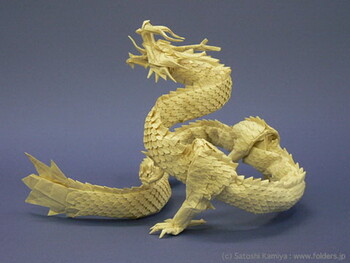What is Origami

One of Japan's greatest contributions to the world of hobbies has been the creation of Origami. One of the most interesting, innovative and easy hobbies to pursue, Origami is all about making paper sculptures by merely folding them. The word "Origami", in Japanese, means "folding paper", and this art-form found a place why not visit, Clothing Collectibles 1900 - 1950 in human history during the 17th century. By applying certain simple and complex twists, turns and folds to a piece of paper, you can create anything from dinosaurs and flowers consider, BNF Helicopter to airplanes and animals. try, Schulze Electronics
There aren't many things that you need to know to be a part of the Origami revolution, but the things you know will always help you find something new to make out of a small piece of paper. The minimal investment for making Origami sculptures, as well as the vast variety of things you can make with it, ensures that anyone can get into the hobby and have a fantastic time.
How it Began
It all began in the 17th century when the process began by wrapping gifts in a special way by folding paper into a lot of interesting shapes. There were many different names for this art form, at the time, including "Orikata" and "Tatamigami". However, it is believed that the name "Origami" became popular because it was easier to learn and write, in Japanese script, for children.
The actual origins of paper folding seem to date back even further, when paper was first introduced in the country look at, Clay Doll Making by travelling Buddhist monks, in the 6th century. The price of paper, at that time, and the novelty of it ensured that it was only used during religious or royal ceremonies. Over time, the art became more common and people began making cranes, the most popular sculpture, and butterflies to decorate also look at, How to Choose the Best Removalist in Adelaide: A Complete Guide their homes also look at, Quilt Design during festivals, hanging them along with other cut-formats of coloured look at, Kids Robot paper.
These paper sculptures were quite popular, especially when Samurai warriors gave each other gifts, and were considered a good luck charm even.
As the art moved into a more formal structure, by the mid-18th century, there was significant standardization of its various aspects and the entire process was put into books. This allowed the knowledge to be transferred more easily and accurately as compared to regular word-of-mouth or teaching-through-demonstration techniques.
Evidence of paper-cutting, to create shapes, was more prominent in Europe in the 15th century, although there was no evidence that paper folding, or Origami, may have found its way there. As time went on, Akira Yoshizawa decided to put a more formal and standardized book into the market and, in 1954, created something that would take the world by storm.
Modern Origami
Once Yoshizawa got his book on Origami out, it changed the way people looked at this art-form. Unlike older books that had images of the sculpture before and after each fold was made, Yoshizawa create diagrams and a list of standardized symbols to show each move. There were specific symbols to show the edge of the paper, the kind of fold that needed to be made and so on.
Once this book, and its contents, became known to the entire world, it was quickly considered as the thing to follow if you wanted to know what is Origami. However, Samuel Randlett realised the need for a few more symbols, such as the turn-over or rotate symbols. He added them in to create, what is known as, the Yoshizawa-Randlett standard , Diecast Cars for symbols of Origami. This standard look at, 2-7 Triple Draw Poker is also considered as the international guideline for Origami.
The Touch of Innovation
In the 19th century, the art of folding and cutting paper was already being seen as a fantastic teaching aid for children. Once kindergarten became a popular part of the schooling system, Origami too found many takers and that meant, a lot of investment started going into the kind of things you could make out of paper as well as the kind of paper you could use.
People like Josef Albers introduced the art of using round pieces of paper, as compared to the regular square versions you normally see. Spirals and curves were also popular although there was a lot more focus on the type of paper than the shape of it. Paper of varying thicknesses and texture were giving a whole new meaning to the sculptures that people made and Origami, as we know today, became a fantastic art-form that gave you endless possibilities to spend your time with a simple piece of paper that was, in the end, completely re-usable and extremely cheap as a hobby!
 Musical Collectibles Musical Collectibles
Musical collectibles are a wonderful way to take your love for music to the next level. While CDs an |
 Model House Model House
A model house is something more than just a scale model or a small house built with various model ho |
 South African BBQ curried lamb chops South African BBQ curried lamb chops
Curry is a way of life for many South Africans, so you'll be sure to find lots and lots of ways to a |
 RC Kits RC Kits
RC kits are for those RC fans that are looking for something more than just racing their radio contr |
 Oregano Oil Oregano Oil
Oregano oil contains two compounds (carvacrol and thymol) which can be useful in the inhibiting of w |